In addition to taking data, most systems also control outputs. Here DAQFactory offers many advanced automated control features such as scripted automation and PID loop control, but for now we will just use the output channel we created and control it manually from a page component.
1. Click on Page_0 in the Workspace to go to our first page.
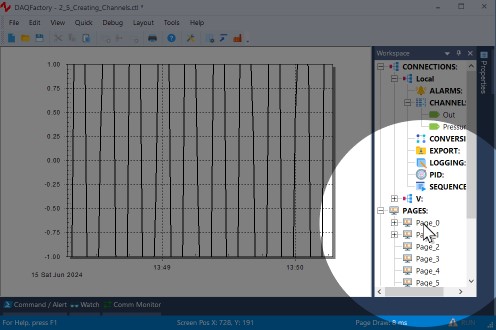
2. Right-click and select Displays-Variable Value to create another variable value component.
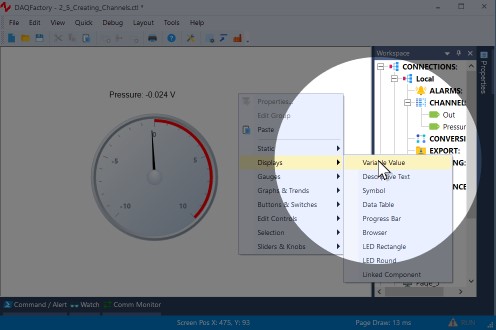
3. Right click on the new component and select Properties... to open the properties window.
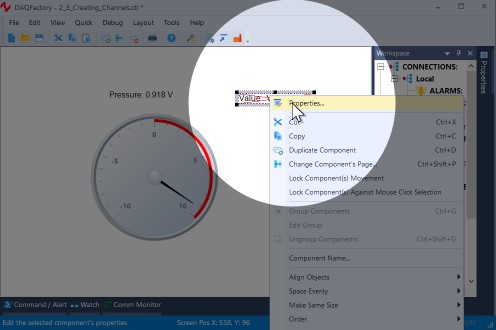
4. For the expression, enter Out[0].
Feel free to set the caption as well. Like before, this will simply display the most recent value of the out channel.
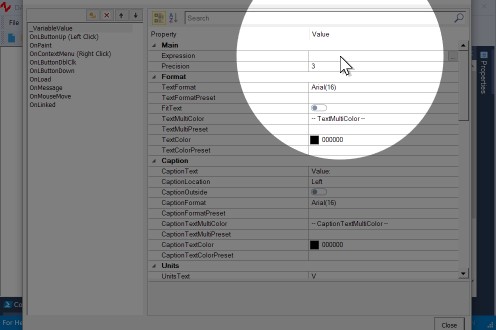
5. In the left column of the properties window, click on OnLButtonUp (Left Click).
With the exception of the first item in the list, which is the component's name and displays the component's properties, the left side lists all the events you can assign action script to. The most common one is OnLButtonUp, which occurs when you click on the component.
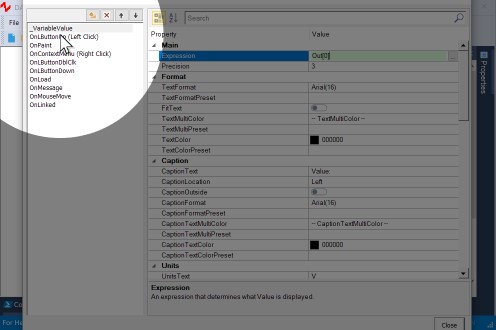
6. At the top, click Numeric Entry.
The main white area allows for you to type in script to be performed when the component is clicked. The top row enables script snippets, which allow you to insert script for certain common actions without having to actually write code. The necessary code is entered for you, both simplifying the process, while also showing you the script. Note that depending on what is installed, you may see more buttons than we are showing here.
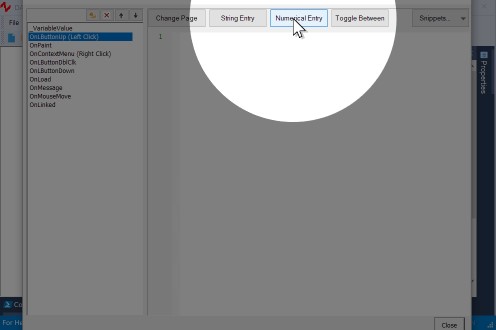
7. When the popup appears asking for your Prompt?, enter New Out Value? then click OK.
Many script snippets will ask you for some values before actually inserting the script. This allows the snippet to customize the code based on your entries.
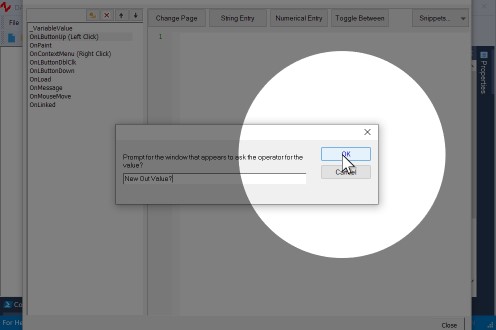
8. When prompted for the Minimum and Maximum, just leave it blank and click OK.
The range allows you to constrain the inputs to particular values. By leaving these properties blank, we are indicating that we do not want a range limitation.
9. In the 4th popup, when prompted for Output channel or variable? put Out and click OK.
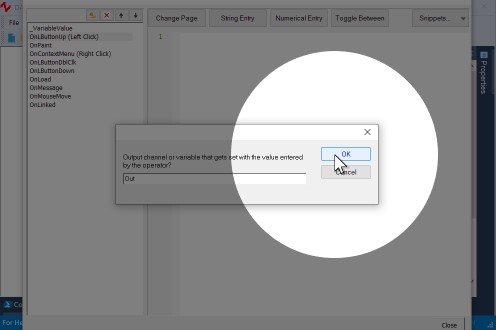
After this last question, the snippet will automatically fill the OnLButtonUp event with the necessary script to prompt the user for a New Out Value, and put the entered value into the Out channel. If you feel comfortable with script, you can use this snippet as a starting point and modify for your needs. If you need to change any of the parameters, simply highlight all the script and delete it, then click Numerical Entry again.
10. Click OK to close the Properties / Event window.
The page will now display your caption with no data. This indicates that out does not have a valid value yet. This is because we haven't set it to anything.
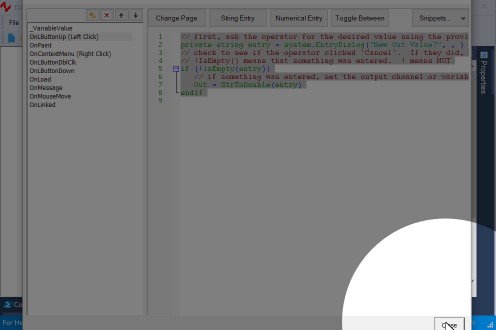
11. Click on the component. Don't hold Ctrl because we want to interact with the control, not move it around. A new window will appear requesting a new value. Enter any number and hit OK.
Out will now be set to the value you entered. The component will now display your new value without the big red X.
The next steps will not work in DAQFactory Express because it doesn't include knobs. Consider upgrading to any of the paid versions of DAQFactory to get knobs and many other controls, among other things.
12. To try a different control, right click somewhere else on the screen and select Sliders & Knobs - Knob. Right click on the new component and select Properties... to open the properties window.

13. Next to both Expression and OutputTarget, type Out. Leave the rest of the properties at their default values and click OK.
The knob is now set to control the out channel.
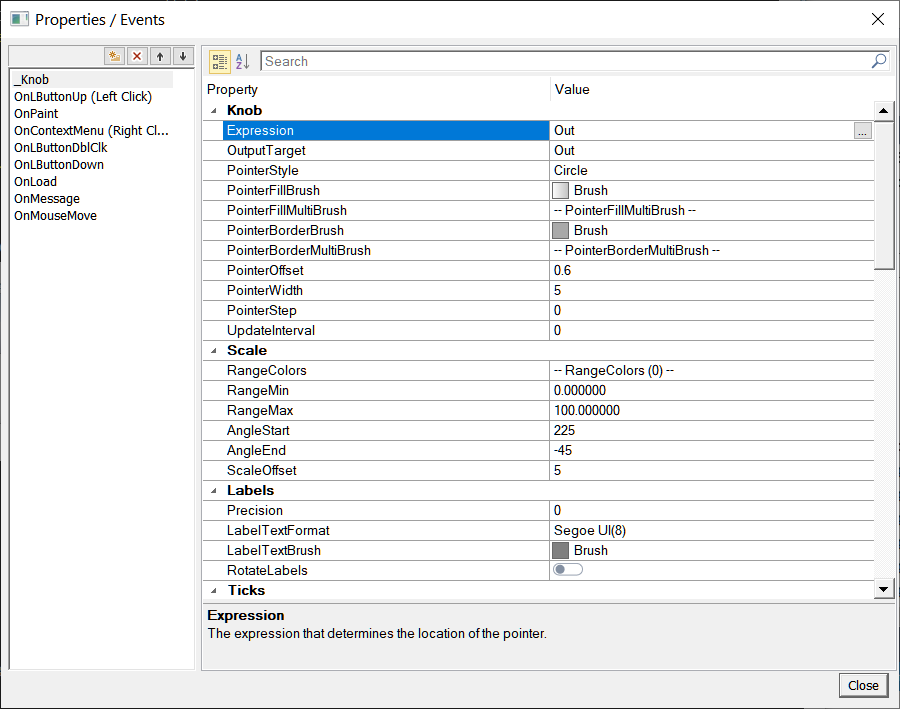
14. Click on the knob and drag in a circle as if turning the knob.
You may have to click once beforehand to deselect the knob. If you look at the variable value component we just created you will see it update as well as you turn the knob. Likewise, if you click on the variable value component and set it to a different value (between the current knob's range of 0 to 100) you will see the knob update to the new setting. This is because we set the Expression, which determines what the knob shows, to Out as well as the OutputTarget, which is the channel or variable that gets updated when the knob is moved by "hand".
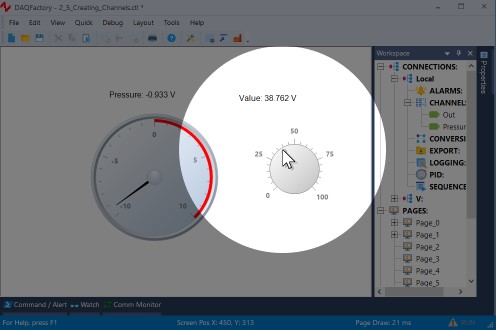
You now know how to set an output to value using several different screen components. Next we will log the incoming data to disk.
For more information on the components that manually control outputs, see the chapter entitled Pages and Components. Most of the components can be used to control outputs.
For more information on sequences and automating your system, see the chapter on Sequences.